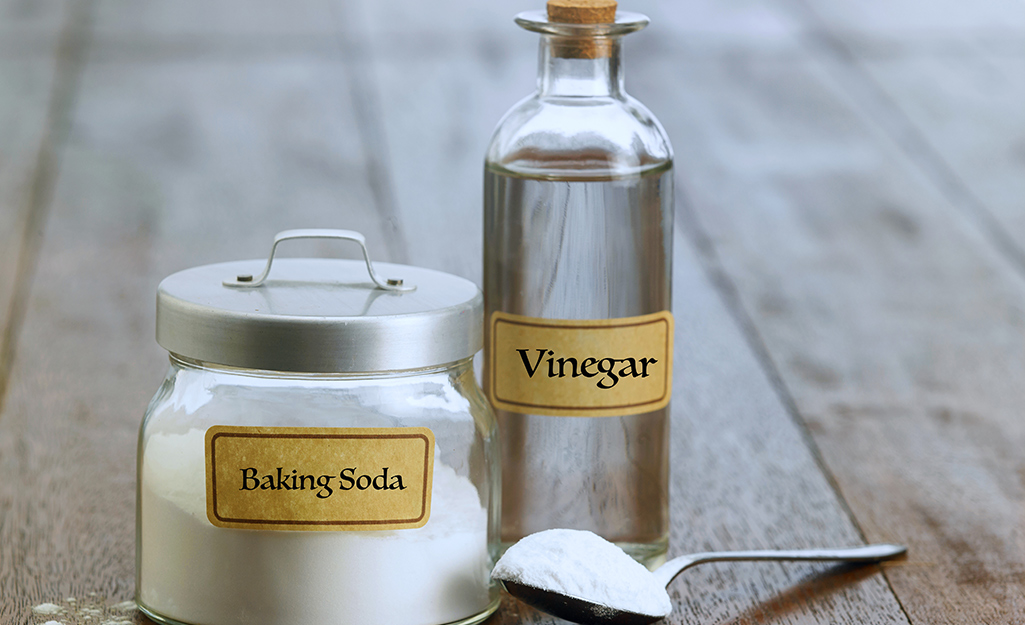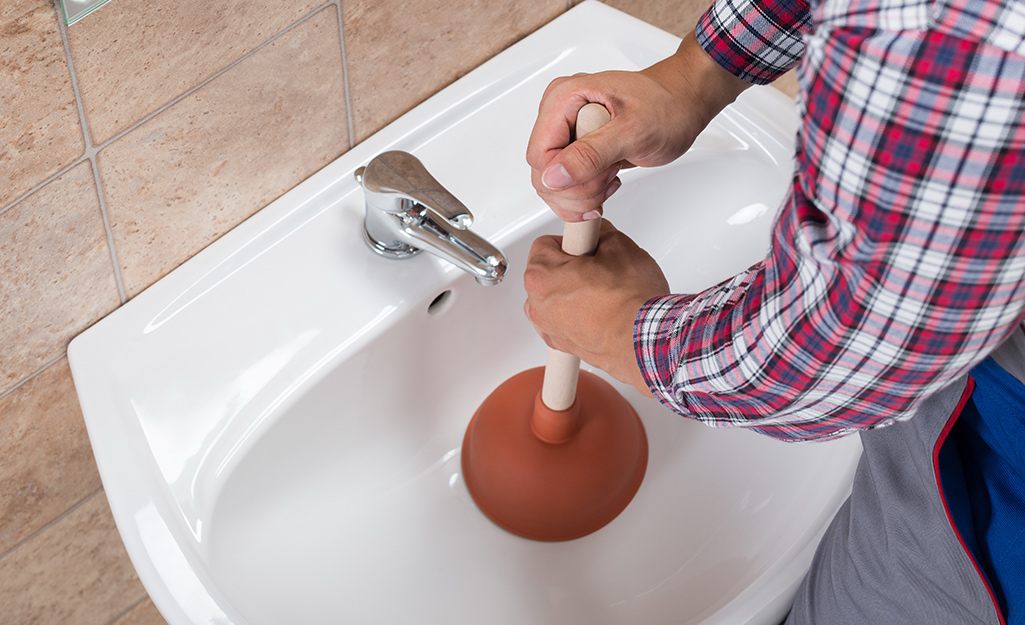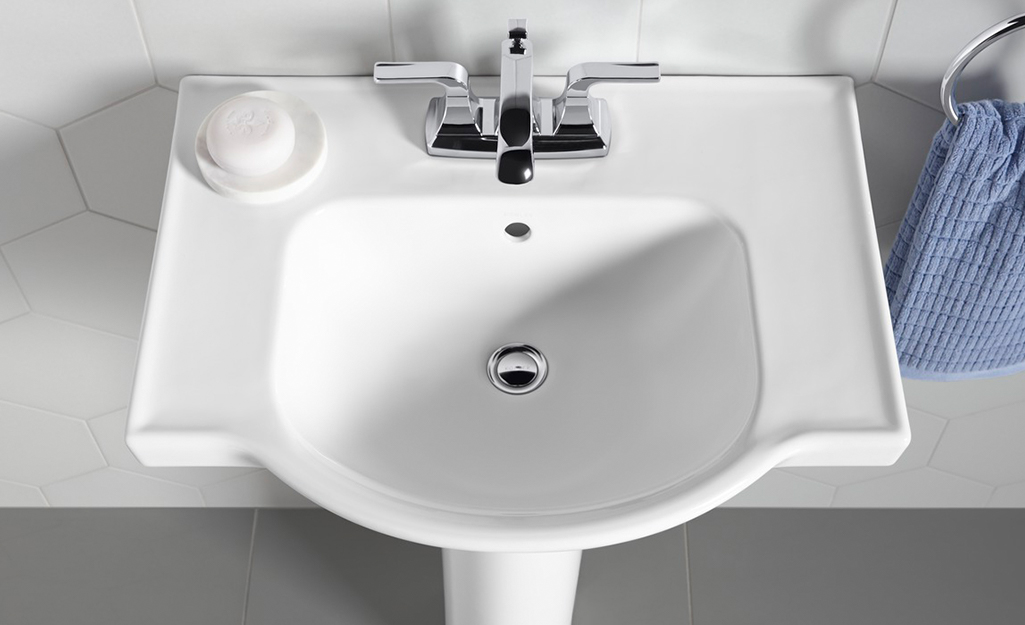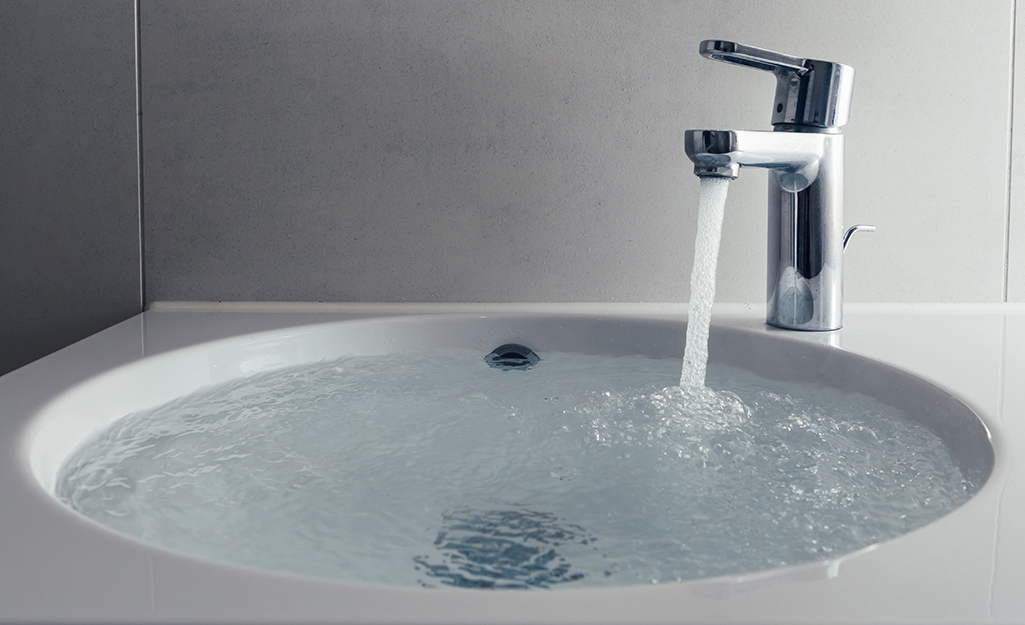How to Unclog a Bathroom Sink

If the water in your sink isn’t draining very fast, even if you let the sink run for a minute or two, you have what is commonly referred to as a slow running drain. A variety of issues can cause a slow running drain in a bathroom sink. Stands of hair, a buildup of soap scum and larger bits of debris can all create a mass that blocks the flow of water.
Many homeowners put off handling a slow drain, but figuring out how to unclog a bathroom sink doesn’t have to be complicated. Use the steps below if your bathroom sink drains slowly and you’re ready to finally find a fix.

There’s no single solution that will always fix a clogged bathroom sink. However, there are a variety of options you can try, starting with the easiest ones that require only a few household items. If those don’t work, move on to more involved options below to fix your clogged bathroom sink.
- Step 1: Allow your sink to drain completely. If you have a slow running drain, this may take some time. You need to start with a clear drain, so avoid using that sink beforehand.
- Step 2: Fill a tea kettle or pot with water. Bring the water to a rolling boil.
- Step 3: Carefully pour the water into the drain. Do this slowly. Ideally, the water will start to clear the clog almost immediately and you’ll be able to add the rest of the water without filling the basin.
- Step 4: Allow the water to drain. If the boiling water helped, but the clog is still present, you can repeat this process as needed. If there’s no change after repeating the procedure, you’ll need to try the next method.

Boling water can be effective at unclogging a sink in your bathroom. However, more serious clogs need extra help to clear. Here’s a method that uses natural household solvents to open up a clogged drain:
- Step 1: Allow your sink to drain completely. This may take time, but it will eventually clear.
- Step 2: Pour 1/4-cup of baking soda into your drain. You can use a funnel to make sure all of the baking soda goes down the drain.
- Step 3: Add 1 1/4-cup of white vinegar to the drain using the same funnel.
- Step 4: Use a sink stopper to plug the drain. If you don’t have a sink stopper, a towel can be used as well. Let this mixture work in the drain for about 20-minutes.
- Step 5: Pour boiling water down the drain slowly. You can use a pot or a tea kettle. Repeat this process if necessary.
Tip: Natural solvents are often a safe and effective solution for clogged drains. If natural solvents don’t work, ready-made products designed to clear clogs are a smart next step. Always follow the manufacturer’s safety instructions when handling and using these products.

A plunger is a useful household tool that you likely already have around the house. Smaller plungers should be used for this method. Here’s how to use a plunger to clear a clog in your bathroom sink:
- Step 1: Remove the stopper from the sink. Most stoppers will come right out when you pull up and turn the stopper to the left. Put the stopper somewhere safe.
- Step 2: Add a little bit of water to the sink. You only want to add enough to cover the drain by about an inch. Avoid completely filling the basin.
- Step 3: Center the plunger over the drain and apply force to create a strong seal. Pump the plunger up and down for about 15-seconds.
- Step 4: Remove the plunger. In many cases, you’ll see that the water clears from your drain very quickly. You can also inspect the drain with a flashlight to see if a clog is visible.
- Step 5: Test your drain. You may need to use the plunger again to clear stubborn clogs.

Difficult clogs don’t always respond to the boiling water, natural solvent or plunger method. In this case, you’ll need a few tools on your team to help clear the clog.
Here’s how you can use plumbing snake to clear a clogged bathroom sink:
- Step 1: Locate the P-trap under your sink. This is a two-piece pipe with a clear curve toward the bottom of the assembly. Place a bucket beneath your sink’s P-trap.
- Step 2: Remove the P-trap. Depending on the type of P-trap your sink uses, you’ll need a screwdriver to remove the screws or a wrench to remove slip nuts on each end of the pipe. Remove your P-trap slowly, as water may be released when you disconnect it.
- Step 3: Check the P-trap to see if the clog is located inside. If so, you can use a bent wire hanger to remove the clog. If not, you’ll need to use your plumbing snake to access the clog.
- Step 4: Following the manufacturer’s directions for use, insert the snake into the pipe opening, continuing until you feel you’ve hit something. In most cases, this is the clog that needs to be removed.
- Step 5: Secure the snake by tightening the nut assembly near the handle of the snake. Now you can begin to twist the snake in order to grab the clog and clear it from your drain. When the clog is cleared, you won’t feel resistance.
- Step 6: Secure the P-trap back in place and check the sink. If the clog has been cleared, your sink will function as normal.

Stubborn clogs often can’t be cleared without special tools. This method makes use of a wet dry vac to get your sink up and running again.
- Step 1: Place a bucket beneath your P-trap.
- Step 2: Remove the P-trap with a screwdriver or wrench, depending on the fastener type used on your model. Keep the screws or fasteners nearby.
- Step 3: Attach the wet dry vac hose to the stopper pipe. This is the vertical pipe that goes up to your sink basin. Connect the other end of the wet dry vac hose to the vacuum.
- Step 4: Adjust your vacuum to the “wet” or “liquid” setting.
- Step 5: Plug the drain with the sink stopper. If your sink doesn’t have a stopper, you can use a towel or rag to help create a seal.
- Step 6: Turn on your wet dry vac. Pulse the power on and off a few times to help get the clog moving. In some cases, the clog will come out completely into the vacuum. Other times, you’ll need to manually remove the clog from the end of the drain opening.
- Step 7: Re-install the P-trap and check the sink.

A clogged bathroom sink can take time to clear. You might even have to try multiple methods. Avoiding clogs in the first place can help you prevent these kinds of maintenance tasks.
Here are some tips to help you avoid a bathroom sink clog in the future:
- Avoid washing hair from shaving down the drain. Small hairs may not seem problematic, but over time, they can build up and clog your sink.
- Clean your sink’s stopper regularly. Stoppers can collect hair and debris, but this is relatively easy to remove. Left unchecked, it will eventually make its way down the drain, potentially creating a clog.
- Add a grate or screen to high-use sinks. These can trap hair and soap scum before they enter your drain system.
- Finish up with hot water. Hot water from the tap can keep buildup at bay.
- Use boiling water periodically to break down soap scum and other bits of small debris that can create problematic clogs down
https://www.homedepot.com/c/ah/how-to-unclog-a-bathroom-sink/9ba683603be9fa5395fab901d6e40444

Leave A Comment
You must be logged in to post a comment.